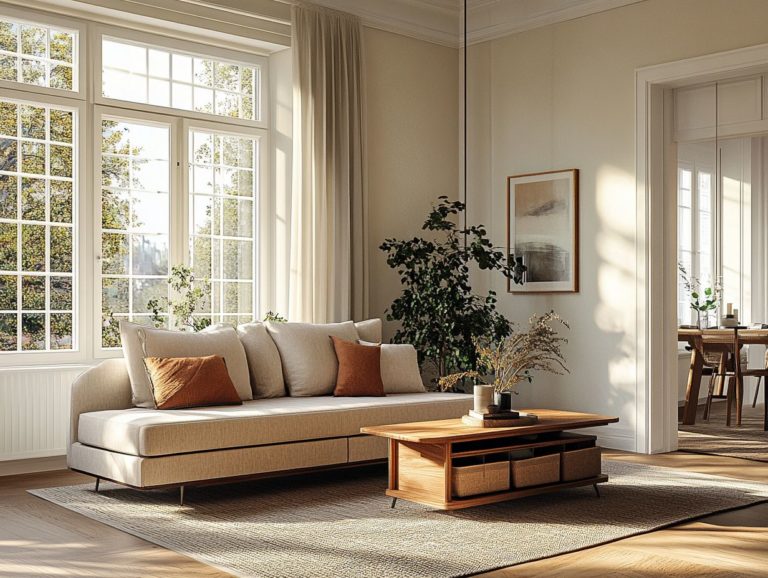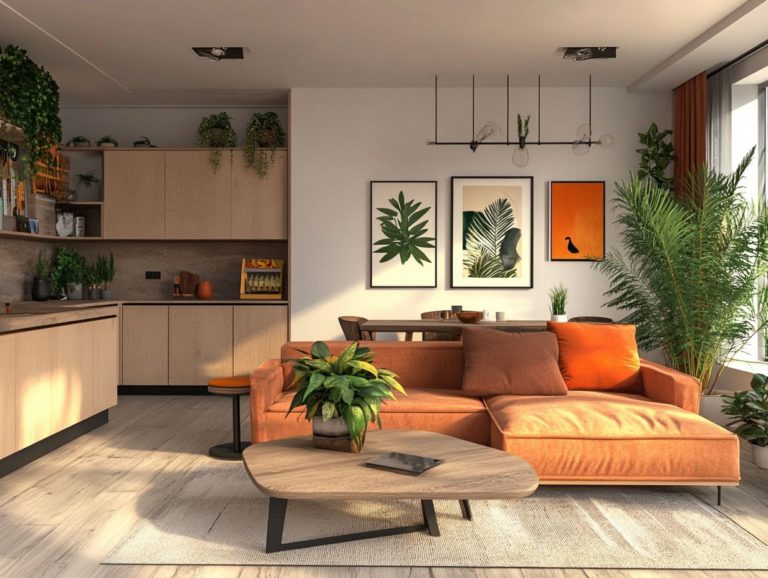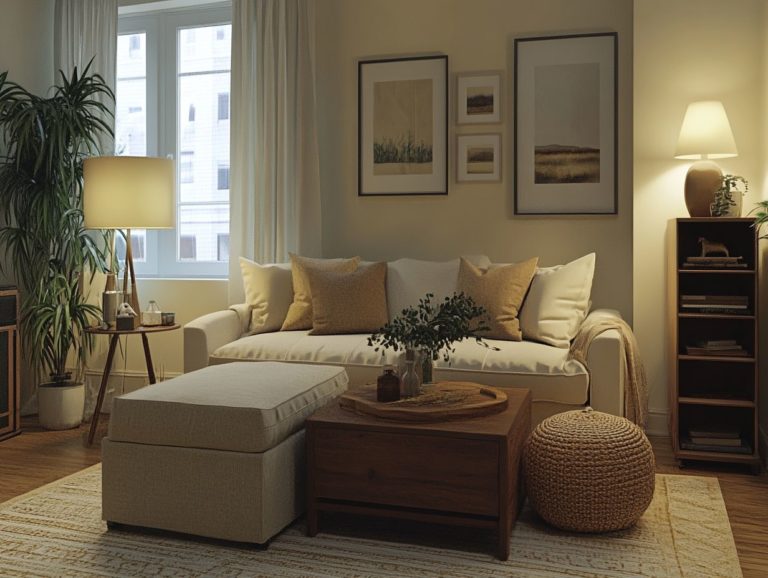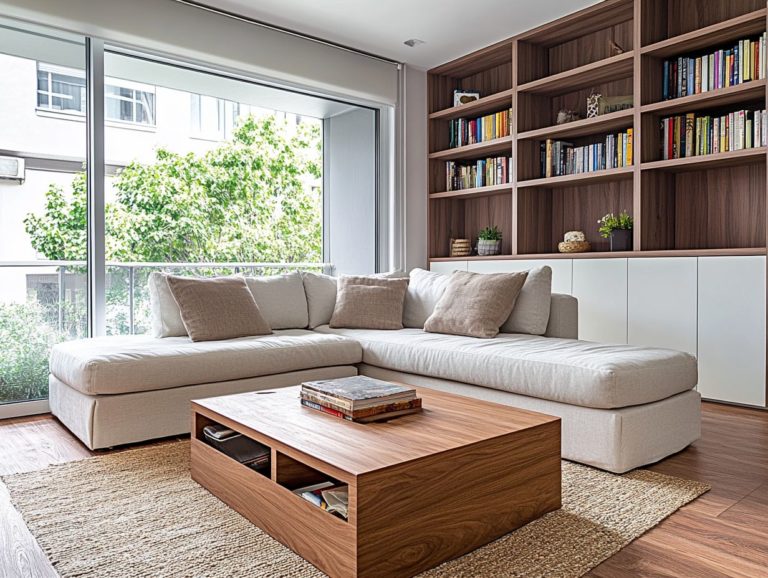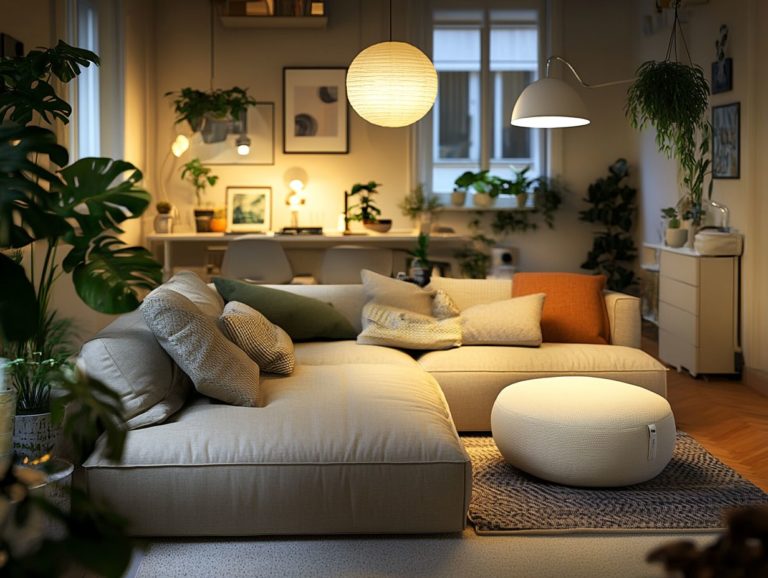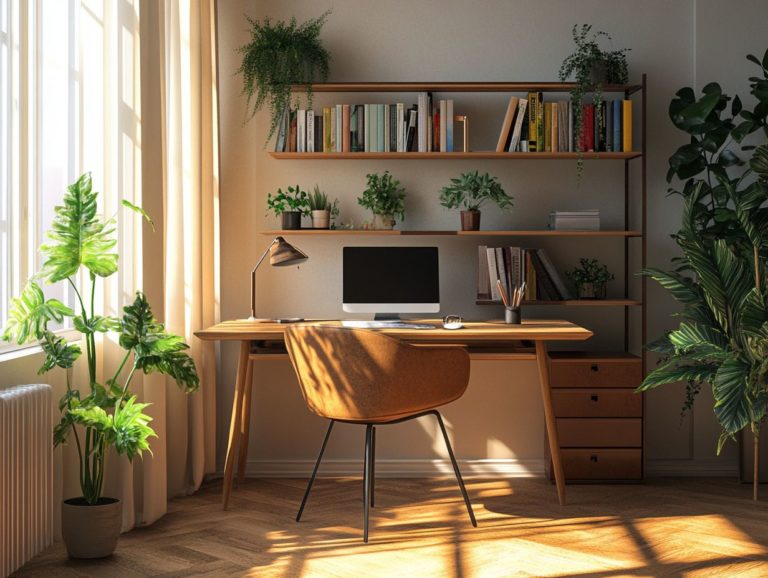Choosing the Right Materials for Multi-Functional Furniture
In today s fast-paced world, multi-functional furniture has become an essential element of modern living, effortlessly combining practicality with style.
This piece delves into the concept of multi-functional furniture, emphasizing crucial factors to consider when choosing the right materials. From durability to aesthetics, you’ll explore the best options for your needs, including wood, metal, and fabric.
You will also find tips for maintaining your furniture to ensure it endures the test of time. Discover how to maximize your space without sacrificing design!
Contents
- Key Takeaways:
- Understanding Multi-Functional Furniture
- Factors to Consider When Choosing Materials
- Best Materials for Multi-Functional Furniture
- Tips for Maintaining Multi-Functional Furniture
- Frequently Asked Questions
- Wondering what factors to consider when choosing materials for multifunctional furniture?
- Which materials are the most durable for multifunctional furniture?
- Can I use environmentally-friendly materials for multifunctional furniture?
- What are some versatile materials for multifunctional furniture?
- Do I need to prioritize cost when choosing materials for multifunctional furniture?
- How can I ensure the materials I choose will match my desired aesthetic?
Key Takeaways:
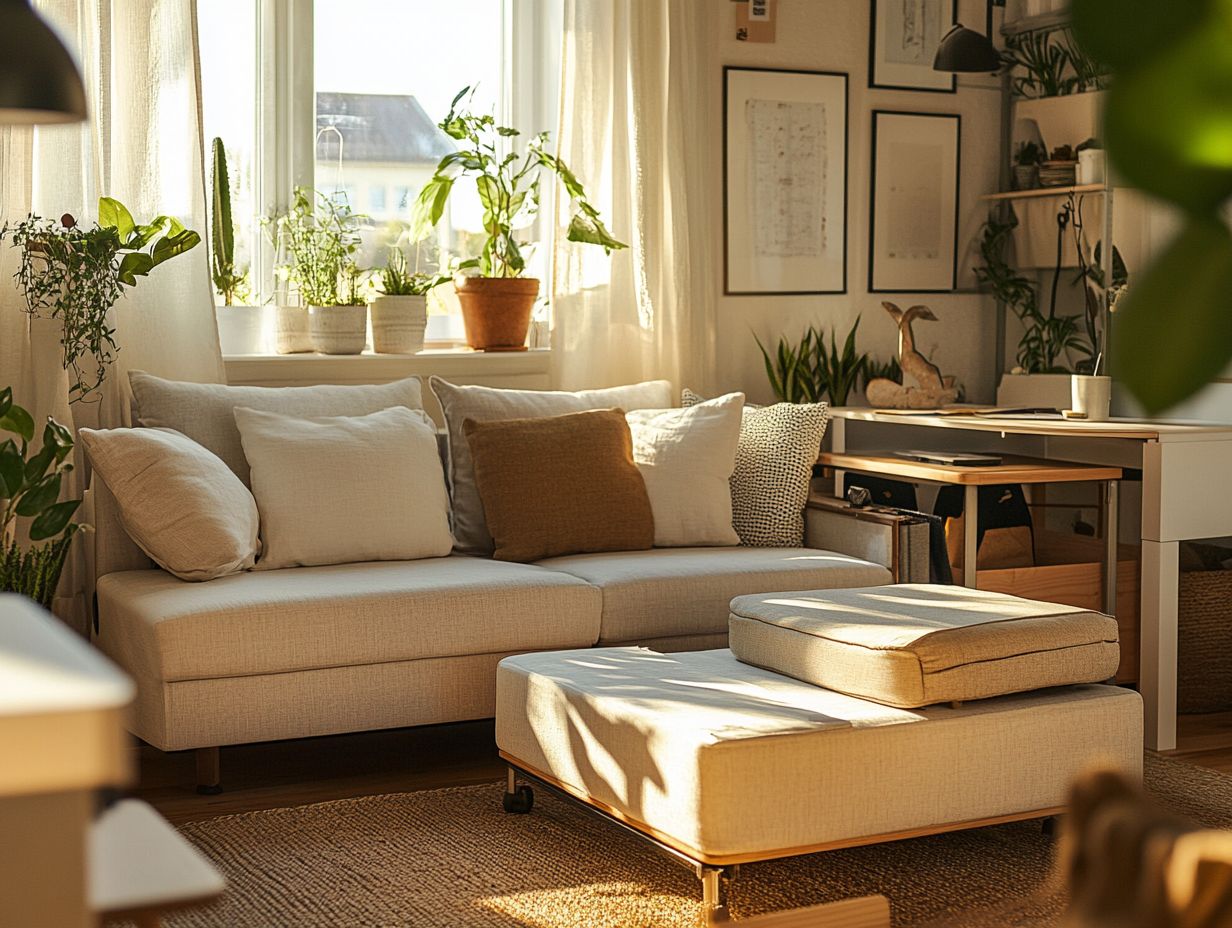
- Durability and functionality are key factors when choosing materials for multi-functional furniture.
- Wood, metal, and composite materials are some of the best options for multi-functional furniture because of their strength and versatility.
- Regular maintenance and choosing materials that meet your specific needs will ensure the longevity and functionality of your multi-functional furniture.
Understanding Multi-Functional Furniture
Understanding multi-functional furniture is essential in today s fast-paced living environments. It seamlessly combines versatility and usefulness, allowing you to optimize your space with ease.
Imagine solutions like compact seating, transforming tables, and wall beds crafted from materials that are good for the environment. This furniture boosts your home’s style and function while signifying a shift towards premium, European-made designs that cater to the evolving needs of contemporary households.
What is Multi-Functional Furniture?
Multi-functional furniture consists of pieces that serve multiple purposes, elevating both functionality and space-saving capabilities in your environment.
This innovative approach to furnishings is especially beneficial in today s increasingly compact living spaces, where every square foot truly matters.
For example, imagine a sofa that effortlessly transforms into a bed not only does it provide a cozy seating option, but it also becomes an extra sleeping arrangement for your guests.
Likewise, a coffee table with built-in storage compartments can help you maintain an organized living area by discreetly tucking away magazines, remotes, and other everyday essentials.
The adaptability of these versatile pieces allows them to transition seamlessly from a dining area to a workspace, catering to your diverse needs and lifestyle while blending effortlessly into your home s aesthetic.
Factors to Consider When Choosing Materials
When you select materials for multi-functional furniture, consider key factors like durability, longevity, functionality, aesthetics, and the use of sustainable materials. Each of these elements is crucial in ensuring the furniture not only fulfills practical needs but also aligns with your design aspirations, especially when designing with multi-functional furniture in mind.
Durability and Longevity
Durability and longevity should be at the forefront of your mind when selecting furniture. High-quality pieces are designed to withstand daily use while retaining their functionality over time.
Choosing the right materials and finishes is essential in this endeavor. For instance, hardwoods like oak and maple are celebrated for their strength and wear resistance, making them ideal for multi-functional furniture pieces you’ll use frequently.
Moreover, metal frames bring stability and support, ensuring that items like sofa beds or extendable tables remain dependable for years to come. Opting for high-performance upholstery fabrics, especially those treated for stain resistance, ensures that they maintain their appearance and comfort even in bustling households.
By prioritizing these robust options, you can create a living space that not only reflects your aesthetic preferences but also endures the test of time.
Ready to transform your space with multi-functional furniture? Let’s dive in!
Functionality and Flexibility
Functionality and flexibility are key features of multi-functional furniture. They enable you to adapt your spaces effortlessly with modular sofas and compact seating that can be reconfigured easily.
These designs adapt to changing lifestyles. They turn a simple room into a versatile oasis! Imagine rearranging a modular sofa into various configurations. You can convert a cozy lounge into a spacious gathering spot or even a guest sleeping area when needed.
Coffee tables with hidden storage and extendable dining tables help you transition smoothly from everyday use to entertaining guests, maximizing space and convenience. This adaptability enhances the usability of your furniture and brings a dynamic aesthetic to your home, making your spaces more inviting.
Aesthetics and Design
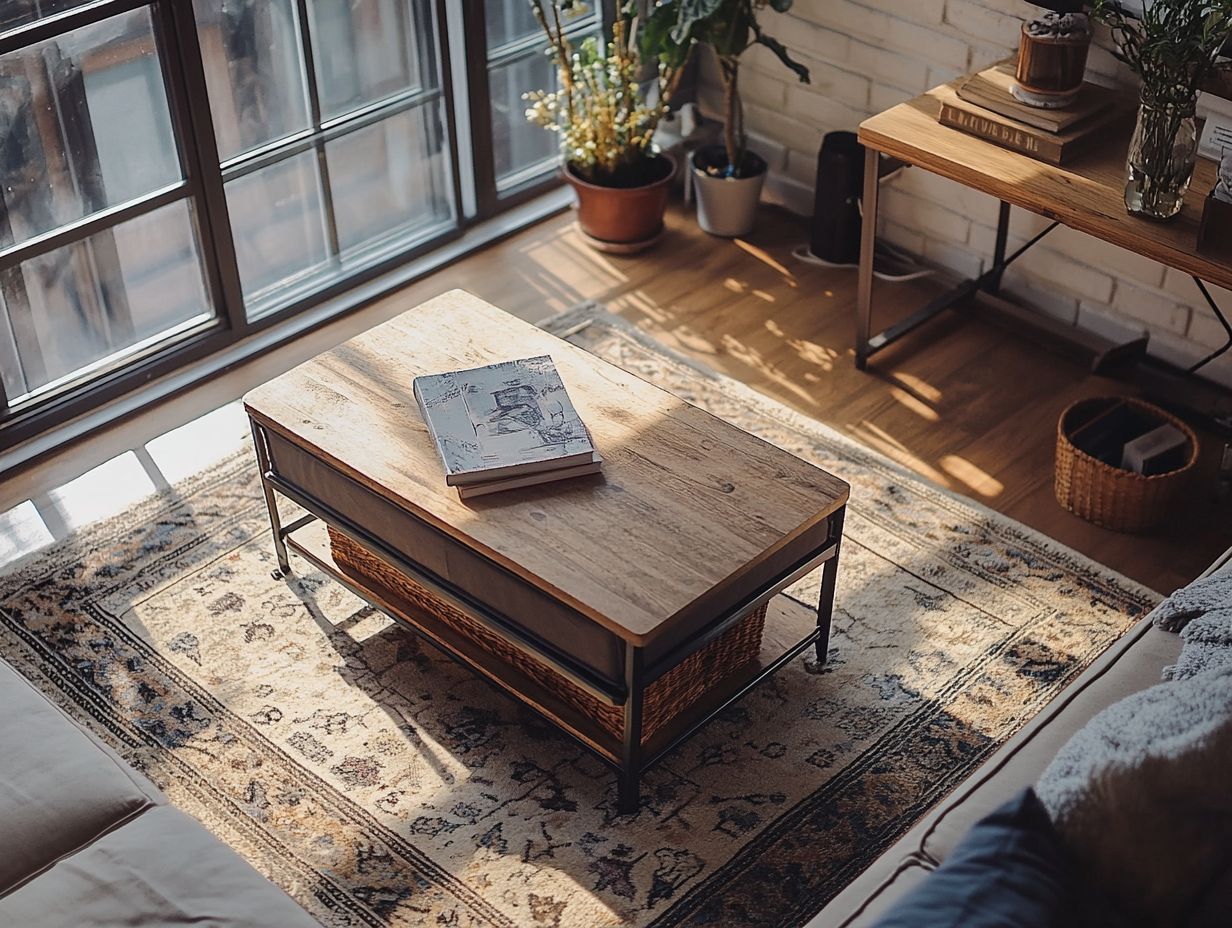
Aesthetics and design are crucial in multi-functional furniture, especially with European-made pieces that blend functionality with elegant design elements. These items serve practical purposes and boost your space’s visual appeal.
Recent trends showcase a flawless integration of minimalism with clever storage solutions. There is a growing appreciation for clean lines and simplicity. For instance, Scandinavian influences have popularized stylish, space-saving furniture, appealing to those who love a clutter-free environment.
The rising use of sustainable materials in design is noteworthy. This combines eco-friendliness with elegance. Such a commitment ensures that multi-functional furniture stands as a testament to artistry in modern interiors, enhancing both your space and lifestyle.
Best Materials for Multi-Functional Furniture
Choosing the right materials for multi-functional furniture requires thoughtful evaluation of options like wood, metal, plastic, glass, fabric, leather, and composite materials. Each choice offers distinct advantages tailored to different functions and aesthetics, allowing you to create pieces that enhance your living space.
Wood
Wood is an exceptional choice for multi-functional furniture. It offers a blend of strength, aesthetic appeal, and the potential for sustainable materials in high-quality production.
Beyond its beauty, wood is remarkably durable, making it a wise investment for households and businesses. The natural grain patterns and its ability to age gracefully add to its timeless charm. Each piece tells a unique story.
Choose wood from sustainable sources. This helps protect forests and reduces your carbon footprint! By opting for responsibly harvested wood, you can enjoy the warmth and elegance of your furniture while contributing to environmental conservation efforts.
Metal
Metal is known for its durability and modern design, making it perfect for multi-functional furniture that needs both strength and contemporary flair.
Beyond its robustness, metal furniture brings a sleek and minimalist aesthetic that elevates your interior space. This versatile material withstands wear and tear and harmonizes beautifully with elements like wood and glass, creating a dynamic contrast.
When used thoughtfully, metal fits into various styles from industrial to mid-century modern catering to diverse tastes. Plus, it s relatively low maintenance, ensuring your pieces remain visually striking and functional without constant upkeep. This is a considerable advantage for busy households!
Plastic
Plastic is a lightweight and versatile material. It opens the door to innovative designs in furniture that serves multiple purposes, meeting your diverse needs.
This adaptability makes plastic an exceptional choice for those looking for casual or temporary solutions. It s perfect, especially if you enjoy frequently rearranging your living spaces or need flexible furnishing options.
With the ability to imitate more expensive materials while being budget-friendly, plastic offers a plethora of possibilities in color and texture. Designers can craft everything from vibrant chairs to sleek tables that are easy to move or store. This makes plastic furniture ideal for both urban apartments and outdoor settings.
Its durability ensures these pieces can handle everyday use, making them a practical choice for any lifestyle you lead.
Glass
Glass adds elegance and modernity to your multi-functional furniture. It often serves as tabletops or decorative accents that elevate the overall aesthetic.
Its transparent quality allows light to flow freely, creating an illusion of spaciousness and brightness that transforms any room.
When you pair glass thoughtfully with materials like wood or metal, you achieve a sophisticated design that beautifully balances warmth with sleekness. For example, envision a glass top resting on a rustic wooden base. This combination exudes charm while maintaining a contemporary vibe.
This harmonious blend enhances visual appeal and boosts the functionality of the piece, making it remarkably versatile for various settings.
Fabric
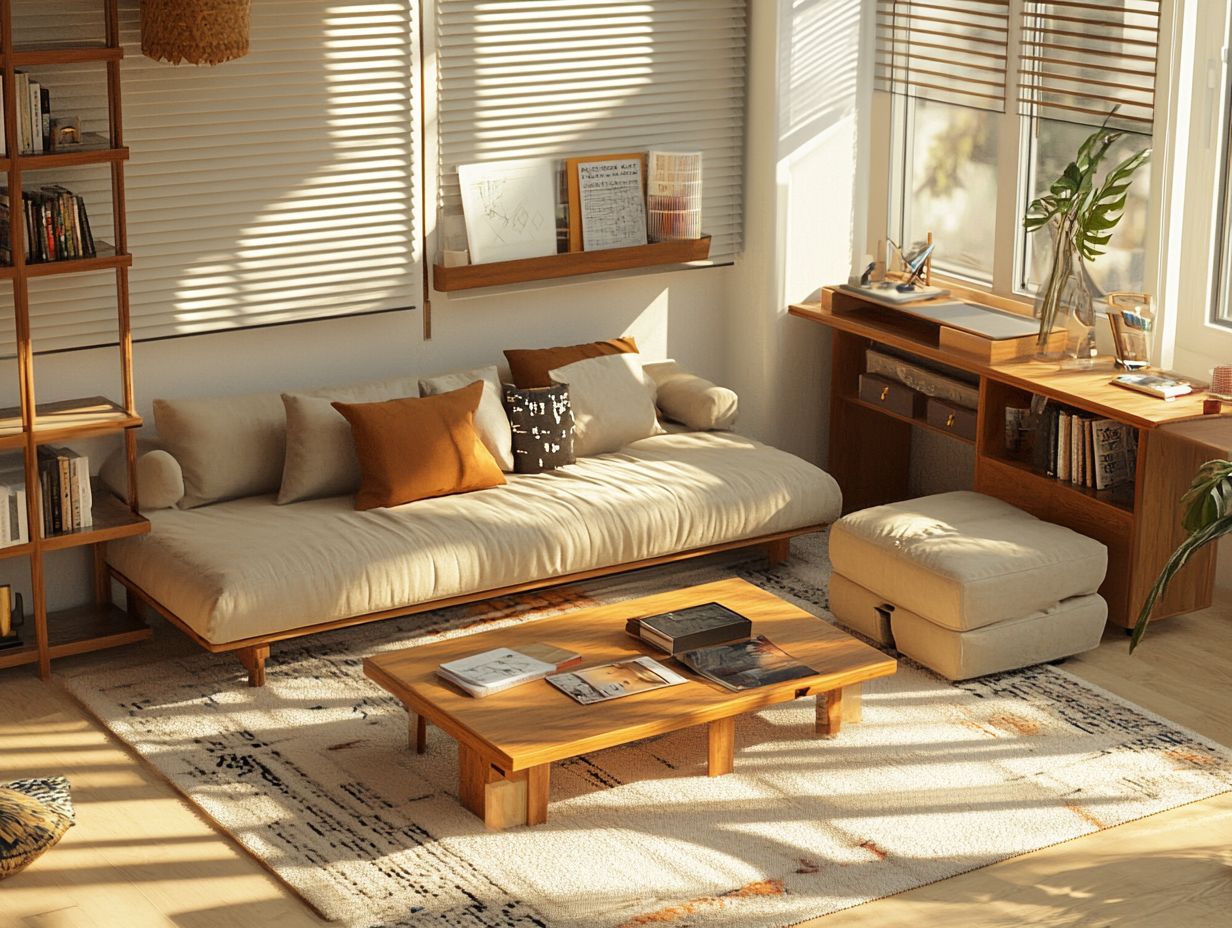
European-made furniture
Fabric plays a crucial role in multi-functional furniture, adding both comfort and style. This is especially true in fabulous pieces like convertible sofas and modular seating arrangements.
These elements are essential for space-saving beds that maximize available area. Selecting the right fabric can dramatically alter not just the aesthetics but also the sensory experience of these items.
For example, options like plush velvet or robust canvas can evoke different moods while addressing various lifestyle demands. Materials like microfiber and leather are favored for their practical advantages, as they resist stains and are easy to maintain.
Enjoy furniture that is as functional as it is chic. Learn how to care for these fabrics to keep them looking great for years, allowing you to relish your investment without worrying about wear and tear.
Leather
Experience the luxury of leather in your home today! This material effortlessly merges durability with a timeless appeal that complements a variety of interior styles.
Its remarkable strength ensures your pieces will retain their elegance over the years, standing strong against daily use without showing signs of wear. This natural resistance to spills and stains makes it an ideal choice for families and busy professionals who value high-quality furniture that s stunning and practical.
With minimal effort needed for upkeep, leather maintains its sophisticated charm while providing the versatility to adapt to different functions and settings. Investing in leather is a savvy choice for anyone seeking both beauty and functionality in their living spaces.
Composite Materials
Composite materials offer an innovative and budget-friendly solution for multifunctional furniture. They allow for imaginative designs while ensuring both stability and durability. This versatility is even more evident in European furniture styles.
Their versatility enables designers to customize the composition to align perfectly with your aesthetic and functional needs. By integrating a mix of materials like plastics, wood fibers, and metals, manufacturers can produce furniture that not only endures the rigors of daily use but also addresses environmental concerns through sustainable production methods, in line with the principles of discovering the versatility of multi-functional furniture.
This adaptability means composite materials can be crafted for various applications. Examples include lightweight storage solutions and sturdy seating options like the Gladdinson Twin Upholstered Storage Bed or Angelina Storage Ottoman. Their cost-effectiveness makes them a fantastic choice for consumers and manufacturers alike, enabling the creation of high-quality pieces without breaking the bank.
Tips for Maintaining Multi-Functional Furniture
Want your multifunctional furniture to last? Here s how to keep it in top shape! Keeping your multifunctional furniture in pristine condition involves employing the right cleaning and care techniques. This not only prevents wear and tear but also ensures that your investment in high-quality furniture endures for years to come, giving you peace of mind.
Cleaning and Care
Cleaning and care are essential for preserving both the appearance and functionality of your multi-functional furniture. By employing proper maintenance techniques, you can significantly extend its lifespan.
For wood surfaces, use a gentle microfiber cloth with a gentle cleaner that won t harm the surface. This method effectively removes dust while keeping the natural oils intact that contribute to its beautiful luster.
Upholstered pieces thrive on regular vacuuming to eliminate debris, with occasional steam cleaning to refresh those fibers.
If you re dealing with metal components, a simple mixture of equal parts vinegar and water works wonders, cutting through grime and preventing rust buildup. Tailoring your cleaning methods to each specific material ensures that your furniture not only looks fantastic but also functions beautifully for years to come.
Preventing Wear and Tear
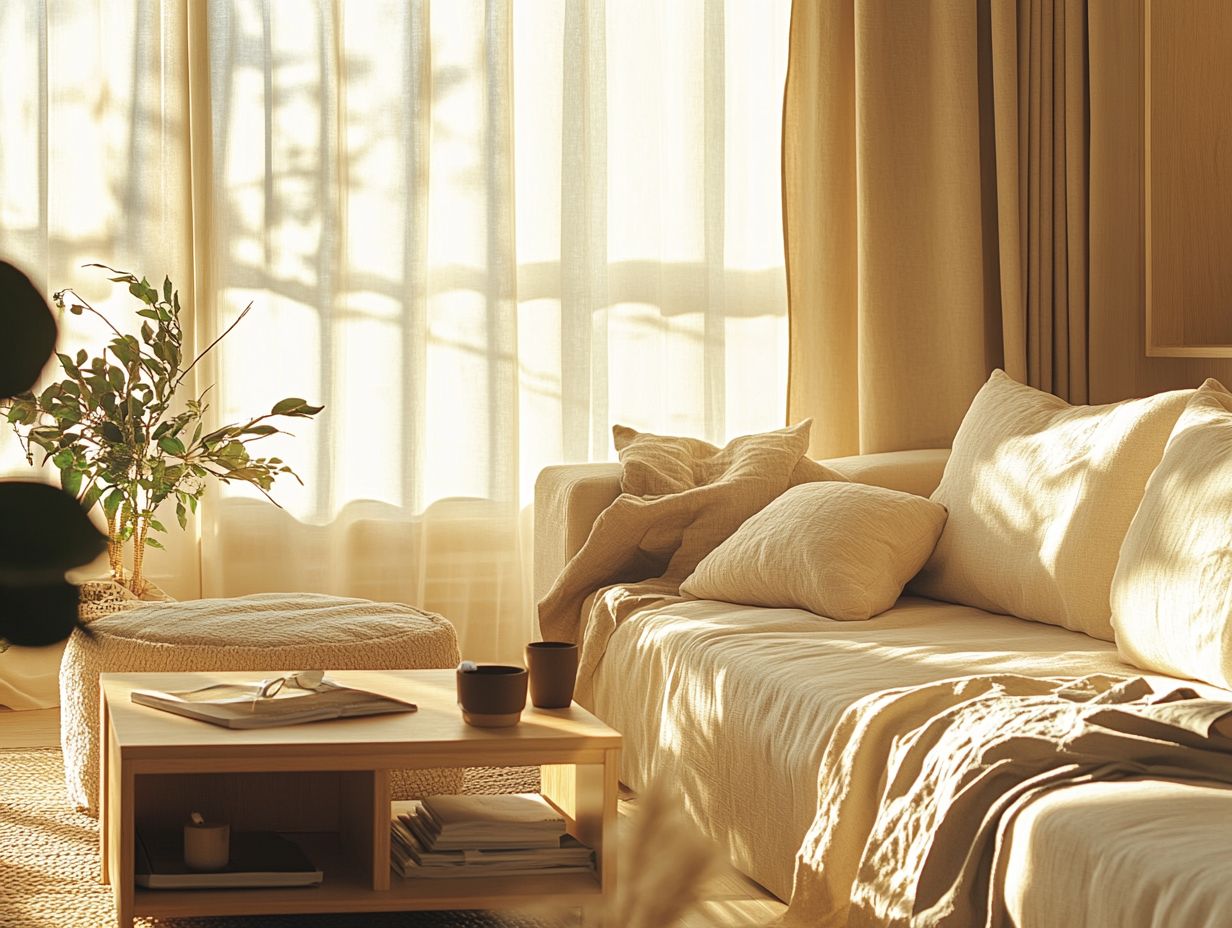
Preventing wear and tear on your multi-functional furniture is vital for preserving both functionality and aesthetic appeal over time. Whether it s through regular cleaning, selecting the right materials, or utilizing protective covers, these strategies are essential for extending the lifespan of your cherished pieces.
Daily use can expose furniture to scratches, stains, and fading. It s imperative to consider how to shield them from environmental factors like sunlight, humidity, and dirt.
Simple habits like placing coasters under beverages, keeping delicate surfaces out of direct sunlight, and promptly tackling spills can significantly reduce damage. Conducting periodic inspections and maintenance, such as tightening loose screws or applying wax, helps keep your furniture in optimal condition. This ultimately saves you from costly repairs in the future.
Choosing the Right Materials for Your Needs
Choosing the right materials for your multifunctional furniture is essential for meeting your specific needs. For guidance, consider choosing the right multi-functional furniture for your needs; this choice will help you make a savvy investment that aligns with your lifestyle.
Consider several factors, including your lifestyle and how you plan to use the furniture. Your overall budget is also important. For example, if you have children or pets, you might prioritize durability and ease of maintenance. This will direct you toward materials that can withstand life’s little mishaps.
If aesthetics and modern design are important, you may prefer more luxurious options. These can add a touch of elegance, even if they come with a heftier price tag.
Understanding these nuances boosts functionality and ensures that each piece harmonizes with your personal style. Ultimately, this leads to lasting satisfaction and practicality in your living space, especially concerning design and aesthetics.
Frequently Asked Questions
Wondering what factors to consider when choosing materials for multifunctional furniture?
When choosing materials, consider durability, versatility, cost, and aesthetic appeal. These factors will ensure that the furniture serves its intended purpose, lasts a long time, and fits your budget and style.
Which materials are the most durable for multifunctional furniture?
Materials like solid wood, metal, and high-quality synthetic materials, such as polypropylene a strong, long-lasting type of plastic are known for their durability. These materials can withstand frequent use and heavy weight, making them perfect for furniture that serves multiple purposes.
Can I use environmentally-friendly materials for multifunctional furniture?
Yes! Many environmentally-friendly materials work well for multifunctional furniture, such as reclaimed wood, bamboo, and recycled plastic. To learn more about maximizing your space with these designs, check out how to make the most of multi-functional furniture. These options reduce the environmental impact of furniture production while offering strength and versatility.
What are some versatile materials for multifunctional furniture?
Materials that can be easily manipulated, such as plywood, modular cushions, and hinges, are excellent for creating multi-functional furniture. These materials allow for easy customization and transformation to serve different purposes.
Do I need to prioritize cost when choosing materials for multifunctional furniture?
While cost is an important factor, it shouldn t be the only one. Investing in high-quality materials may cost more upfront but can save you money in the long run, as they are less likely to require repairs or replacements. Consider the overall value and longevity of the materials.
How can I ensure the materials I choose will match my desired aesthetic?
It s important to consider the overall look you want. Opt for materials with different textures, colors, and finishes to add visual interest. Researching different design styles can also inspire you to find the materials that best suit your aesthetic.
Don t miss out on the chance to enhance your space with functional and beautiful furniture. Share your thoughts or experiences related to multifunctional furniture in the comments below!

